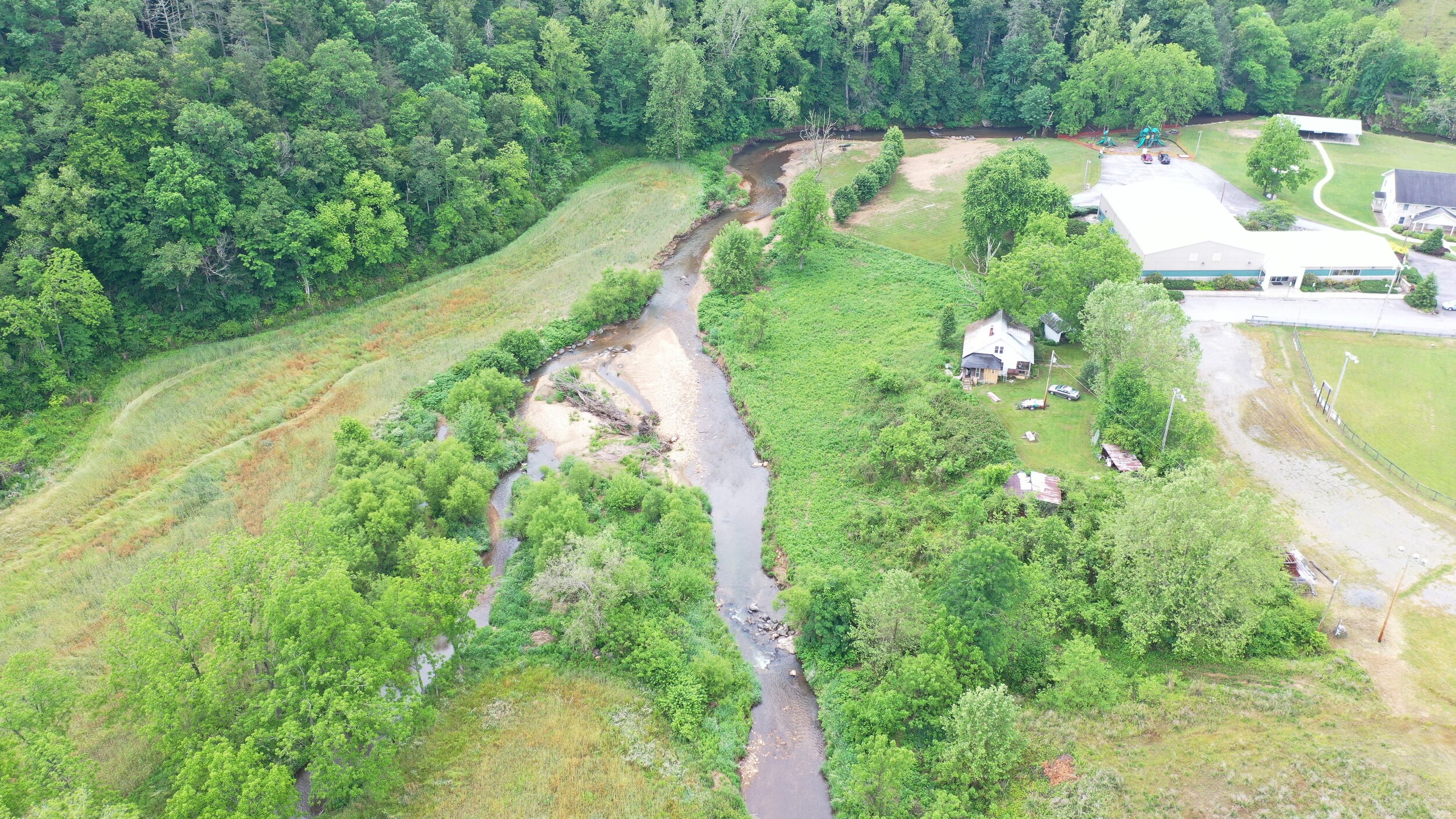Surry County and Resource Institute partnered to restore a section of stream above Carter Falls in the Elkin Recreation Park.
Elkin, NC
A stream restoration project near Carter Falls began in late March with aid received due to damage from two major hurricanes in 2018. Resource Institute, a nonprofit headquartered in Winston-Salem which helps restore America’s streams, rivers, and wetlands, is providing services and assistance to Surry County to help with the restoration project on properties above Carter Falls.
Surry County received $3 million through the NC Department of Environmental Quality Division of Water Resources to address damages related to Hurricanes Michael and Florence in 2018, explained Woody Faulk with Watershed NOW. The project above Carter Falls is the largest project costing between $1 million and $1.5 million. Approximately 5,000 feet of stream bank is affected, on parcels owned by ten different landowners, Faulk said.
Following major storms, the Elkin Recreation Park had been inundated with floodwaters, and Watershed NOW was asked to look at the stream bank which had been severely damaged by the hurricanes. It was immediately suspected that a good bit of the sand left behind throughout the park came from a one-mile stretch of land above Carter Falls, Faulk explained.
“This is the site of a small reservoir constructed in the early 1900s to provide electricity to Elkin. The dam was removed in the 1960s and the instability is the result of the stream working to reestablish a stable dimension, pattern, and profile,” he said. “The reservoir had filled in with sediment over time and when the dam was removed this resulted in an incised channel that did not have access to a flood plain. Thus the storm flows, which should spread out over the floodplain, are confined to the channel. The result is severe and extensive bank erosion, easily producing hundreds of tons of excess sediment every year. The stream has made some headway in reestablishing a floodplain over the last 50+ years, but without intervention, this is a process that will continue for decades before a stable channel is reestablished.”
Faulk said that Resource Institute was contacted and they initiated the process which resulted in Surry County receiving the funds to address the damages. Surry County South District Commissioner Eddie Harris played a significant role in securing this grant, Faulk added. Resource Institute has contracted Ecosystem Planning and Restoration to do the engineering work and North State Environmental to do the construction. The engineering work is complete and the construction is beginning.
The project is expected to take around three to four months, with July as the proposed completion date.
Kitsey Burns Harrison may be reached at 336-258-4035 or follow her on Twitter and Instagram @news_shewrote.
Original Article at https://www.elkintribune.com/news/32120/stream-restoration-project-under-way


















